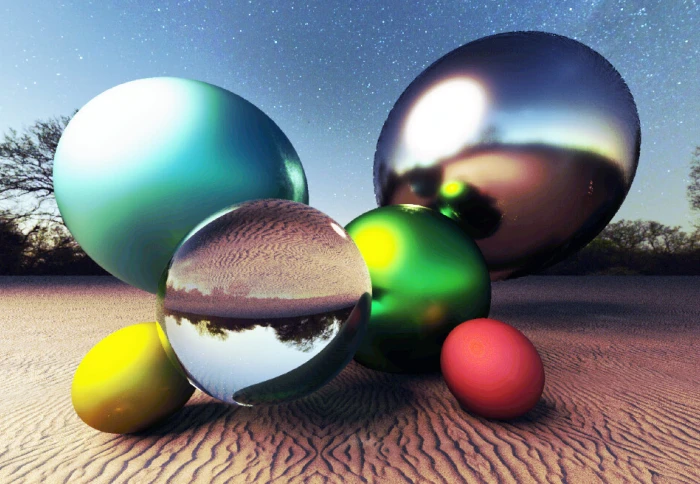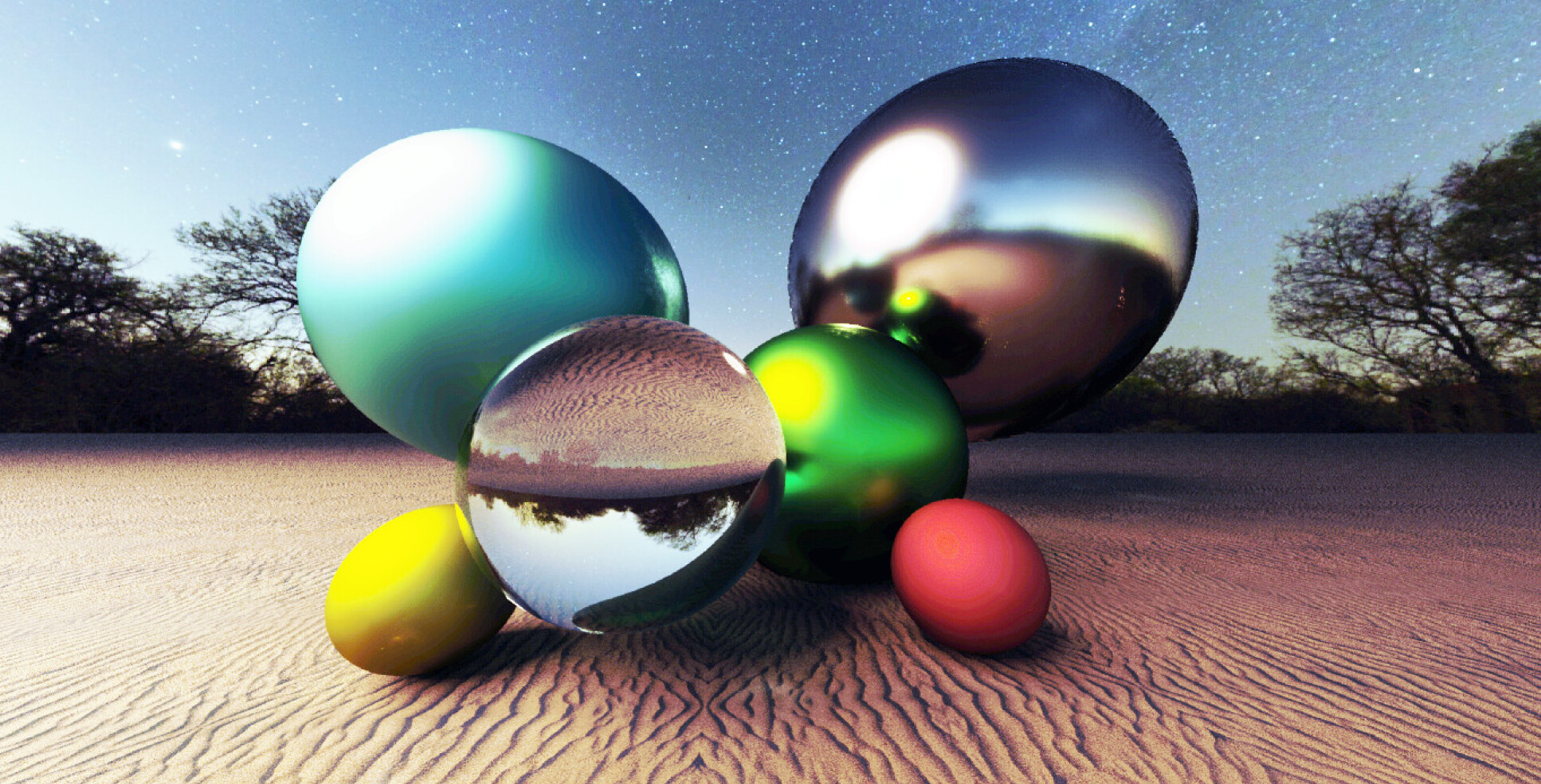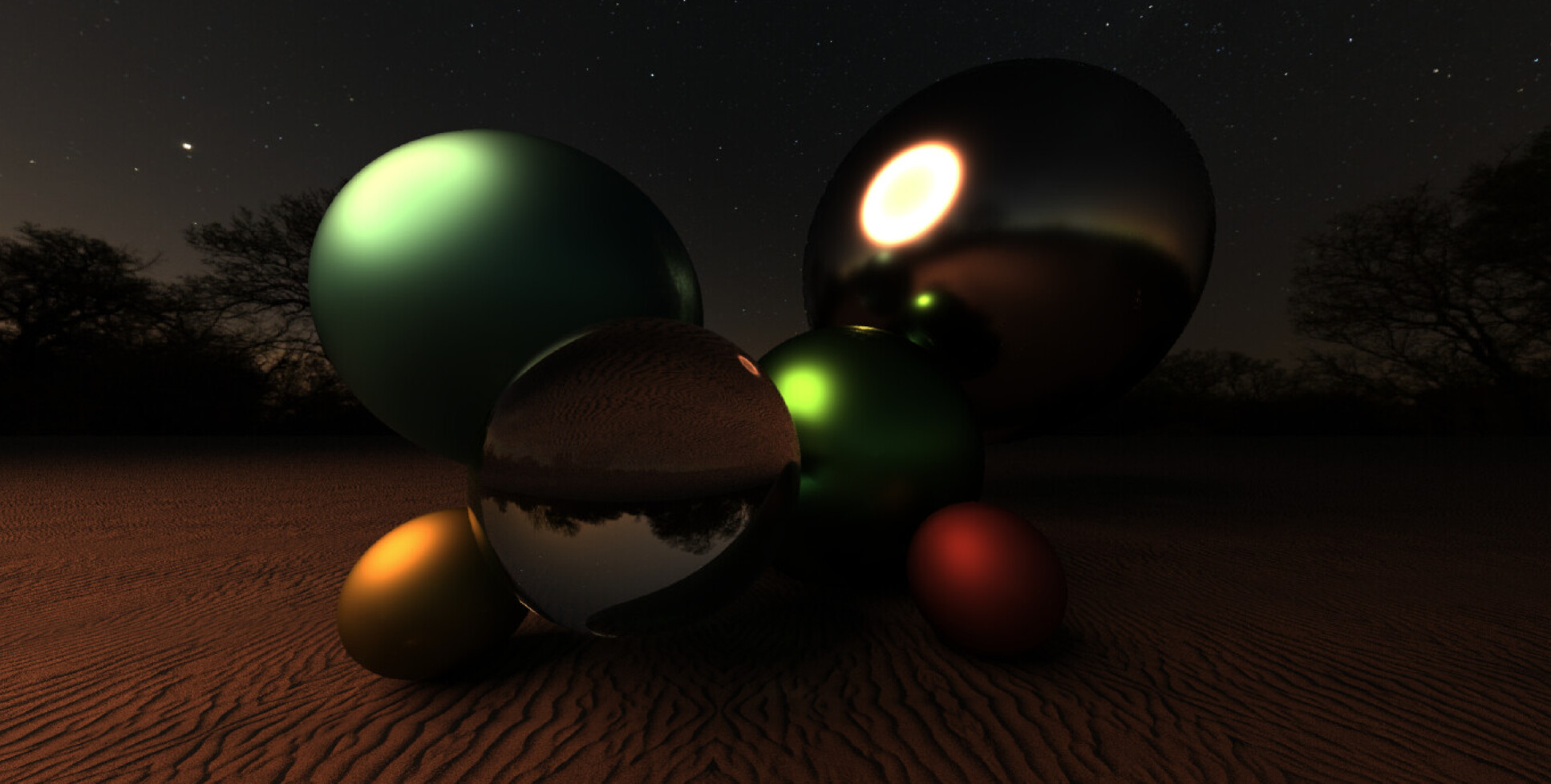DoC students receive Computer Graphics design awards


Students generate photorealistic images using a graphics programming tool
In the 3rd year Computer Graphics course, students are tasked with developing their own ray tracer using our specialized browser-based computer graphics programming tool. Ray tracing, an advanced algorithm in computer graphics, enables the creation of lifelike images.
As part of the final coursework project, students have the freedom to select and implement unique special effects. This often leads to remarkable outcomes, prompting us to recognize excellence through awards in two distinct categories each year. The first category, 'technical complexity,' acknowledges challenging effects such as refraction, volumetric shadows, and depth of field simulation. Meanwhile, the 'scene composition' category celebrates creative approaches to crafting visually stunning images that also convey compelling narratives.
Technical complexity award winners
The winner in the category technical achievement implemented physically correct refraction and mat surface scattering within a well composed environment map.


The runner ups implemented an nD fractal, which can only be rendered with ray tracing since surface tessellation would be too expensive even with modern hardware
SCENE COMPOSITION AWARD WINNERS
In the category scene composition, the winner generated relatively complex geometry within a restricted environment and made some fun choices what to render.
Students also created environment maps and dynamic environment modifications.
Article text (excluding photos or graphics) © Imperial College London.
Photos and graphics subject to third party copyright used with permission or © Imperial College London.